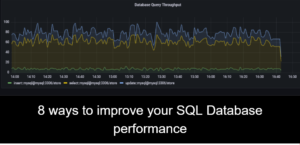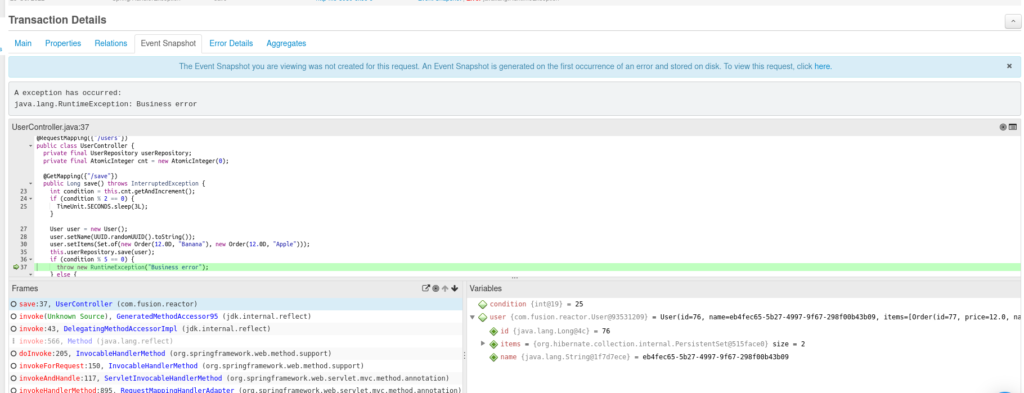Tips and Guidelines for Implementing an Application Performance Monitoring / Observability solution
Why do companies need an application performance monitoring / observability solution in the first place?
Having an effective application performance monitoring and observability solution is critical for today’s businesses. In today’s digital world, applications are the backbone of many organizations and downtime can result in significant losses in terms of revenue and customer trust. An APM solution provides real-time visibility into the performance and behavior of your applications, allowing you to quickly identify and resolve any issues that arise. With accurate performance monitoring and detailed troubleshooting capabilities, you can ensure that your applications are delivering the best possible experience to your customers and keep your business running smoothly.
Investing in an APM solution is a proactive step towards reducing downtime, improving customer satisfaction, and maximizing the return on investment for your technology investments.
Reviewing guidelines when choosing an APM solution is important for several reasons
- Helps you make an informed decision: Guidelines provide a comprehensive overview of the key factors to consider when choosing an APM solution, such as the specific KPIs and metrics to track, ease of integration and deployment, and robust troubleshooting capabilities. This information helps you make an informed decision about which solution will best meet your business needs.
- Improves ROI: By following guidelines, you can ensure that you choose an APM solution that fully aligns with your business requirements, maximizing the return on investment.
- Avoids common pitfalls: Guidelines can help you avoid common pitfalls that organizations face when choosing an APM solution, such as choosing a solution that is difficult to integrate or deploy, or one that doesn’t provide adequate troubleshooting capabilities.
- Ensures that you have the right solution: By following guidelines, you can ensure that you have the right solution in place to monitor the performance and health of your applications, reducing downtime and increasing customer satisfaction.
In summary, following guidelines when choosing an APM solution can help you make a well-informed decision, improve ROI, avoid common pitfalls, and ensure that you have the right solution in place to meet your business needs.
The top 10 most important guidelines to consider when implementing an APM/Observability software solution
- Define clear goals: Before starting the implementation process, it is crucial to have a clear understanding of the goals and objectives that you want to achieve with the solution. For example, are you looking to improve application performance, reduce downtime, or improve customer satisfaction?
- Choose the right solution: APM/Observability software solutions come in many different forms, such as cloud-based, on-premise, and open source. It’s important to choose a solution that meets the specific needs of your organization, including compatibility with your existing infrastructure and budget.
- Assess your environment: Assess the technical environment in which your applications run, including hardware, software, and network components, to ensure that the solution you choose is compatible with your infrastructure.
- Define your key performance indicators (KPIs): Identify the KPIs that are most important to your organization and ensure that the solution you choose is able to monitor and report on these KPIs.
- Plan for scalability: As your organization grows, so too will the number of applications you need to monitor. Ensure that the solution you choose is scalable and can grow with your organization.
- Look for a Solution that Offers Robust Troubleshooting Capabilities: Ensure that the APM solution you choose has robust troubleshooting capabilities, such as application profiling, error reporting, and production debugging. This will help you quickly identify and resolve performance issues, reducing downtime and increasing customer satisfaction.
- Consider customization: Depending on your specific needs, you may need to customize the solution to meet your requirements. Make sure that the solution you choose is flexible and can be customized as needed.
- Plan for integration: APM/Observability solutions often need to integrate with other tools and systems, such as logging tools and issue tracking systems. Plan for these integrations in advance to ensure a smooth implementation process.
- Plan for training: Training is a critical component of any implementation process. Ensure that you have a training plan in place for both technical and non-technical users, to ensure that everyone understands how to use the solution effectively.
- Consider Ease of Integration and Deployment: Make sure that the APM solution you choose is easily integrated with your existing systems and can be deployed quickly and with minimal disruption to your business operations.
Consider FusionReactor APM to fulfill your APM requirements
- Real-time Monitoring: FusionReactor APM provides real-time monitoring of your application’s performance, allowing you to identify and resolve issues as soon as they occur.
- Code Level Visibility: FusionReactor APM provides code-level visibility into your application’s performance, enabling you to see exactly where the errors are occurring and which code is causing them.
- Root Cause Analysis: FusionReactor APM provides detailed root cause analysis, enabling you to quickly determine the underlying cause of application errors, so that you can quickly resolve them.
- Performance Metrics: FusionReactor APM provides detailed performance metrics, enabling you to monitor your application’s performance over time and identify trends and patterns.
As soon as an issue occurs, FusionReactor APM allows you to identify and resolve it in real-time
FusionReactors Event SnapShot – Code-level visibility into your application’s performance enables you to identify exactly where errors occur and which code is causing them
Conclusion – Tips and Guidelines for Implementing an Application Performance Monitoring / Observability solution
By following the guidelines outlined above, you can ensure a successful implementation of an APM/Observability software solution that meets the needs of your organization and delivers measurable business benefits.





